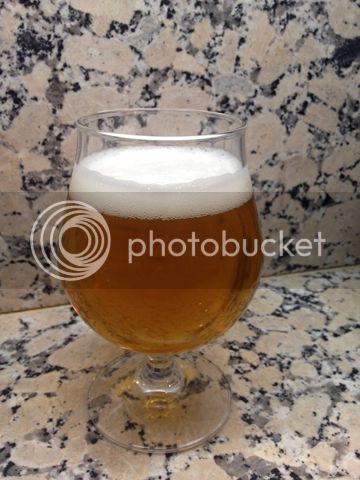B2Barleywine
Well-Known Member
Brewing this one up this weekend.... Holy hops, there's a lot of hops in this thing!

I just had a bomber of the most recent batch of enjoy by ( i think its 02-14-14) and it does not have nearly the powerful tropical fruit flavor/aroma as the previous edition did. It was much more Dank/earthy this time. Has anyone tried it?
I'm bottling my batch tomorrow! 3 more weeks to wait... I should buy a keg!

Do you leave the first addition in?I generally double dry hop both in primary, first addition 3 days second addition 4 more days, cold crash 3 days then straight to the keg.
Sent from my iPhone using Home Brew
So I finally kegged mine and tasted it a day later. I understand it's not fully carbed but I'm not getting a lot of hop aroma like the original. I've had Enjoy by numerous times and before I take a sip, the aroma just hits me. Seems like I may have done something wrong. Since I'm relatively new to AG brewing (2 yrs), maybe someone can give me suggestions on what I can improve on next time. I followed the steps exactly as written, fermented for 10 days, added 1.5 oz each of galaxy/nelson in a paint strainer bag into the carboy. Dry hopped for 4 days (bag floated on top the whole time). Racked into secondary carboy and added 1.5 oz each of galaxy/nelson in another bag (floated the whole time again). Again waited 4 days and then just kegged. The beer is still really good but it's lacking the big hop punch in the nose that I'm use to with the commercial one.
Also, try adding dry hops with no bags. Just put them right in the fermenter. Cold crashing drops them out. You will notice a huge difference. Also on big hoppy IPA's I split my hops additions into 2-3 bags in the boil kettle.
Sent from my iPad using Home Brew
Thanks alot for the recommendations. At flameout after my boil, I just added the last hop additions (also in a bag) and swirled the bag around for about 10 minutes. Then I ran the wort immediately through my plate chiller straight into my carboy. I'll try to sink my dry hops next time or just drop the pellets in without a bag. Do you think transferring the beer to a secondary carboy, then to a keg has something to do with losing some of the aroma? I can try adding all the hops into only the primary next time and then straight to kegging.
I had some 4/20 and some 2/14 recently, the 4/20 tasted noticeably different and I did not like it nearly as much if at all. Got a case of them both from the same liquor store and drank them from their release date to their "expiration" date and the 4/20 seemed to have a certain "skunkyness" to it. Not sure if they tried to do something "special" for the 4/20 recipe but it just did not compare to the 2/14.
That is the main reason I am deciding to brew this as my first AG batch, the 2/14 was so delicious I needed to find a way to replicate it with reasonable accuracy.
Is there a big difference between dry hopping in the secondary vs. primary with this beer? I have been told to do it both ways and I am not sure what will result in a better beer and if it really makes any difference.
Thanks in advance for any help! I can't wait to give it a try.
Even in a fridge that is actively cooling it? What would it be without the fridge? Crazy stuff.Yes, fermentation generates its own heat and for a nice vigorous fermentation a +10*F difference between fermenter and ambient air isn't unheard of.
I moved the cooler into the basement and its now sitting at 55F inside, the Fermometer still says 70F but I am thinking by tomorrow it will have dropped some more. I just ordered a bunch of parts to make the BrewPi fermentation controller and I will be picking up another mini fridge this weekend, I do NOT want this to happen again.
Hopefully I can update in a few weeks with good news! Only time will tell if anything got messed up, but hopefully it's still decent.
I will be brewing this again in a month when I decide to do another batch, it will be interesting to see the differences.
If you are going with a temp controller might I recommend a chest freezer instead of a mini fridge? About the same price as a mini-fridge but the chest freezer will me more energy efficient and more versatile. (Able to better lager, cold crash, etc.)
Enter your email address to join: